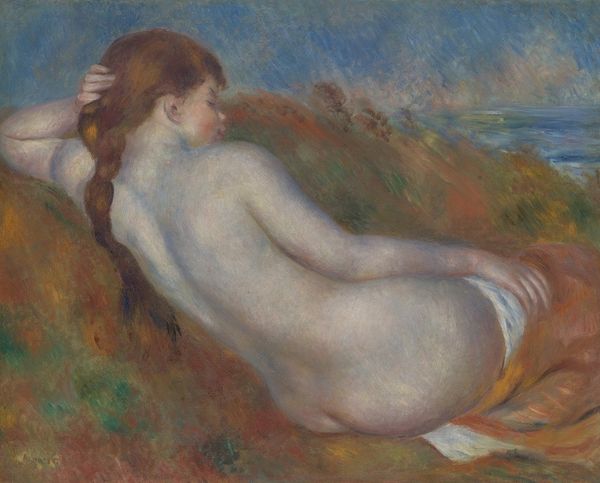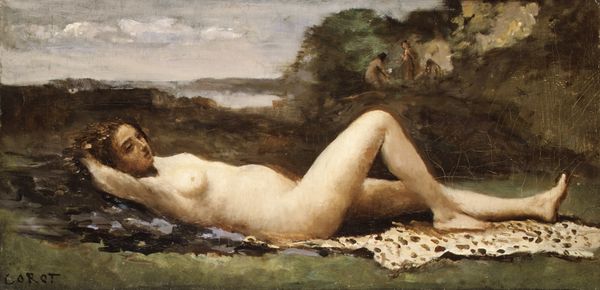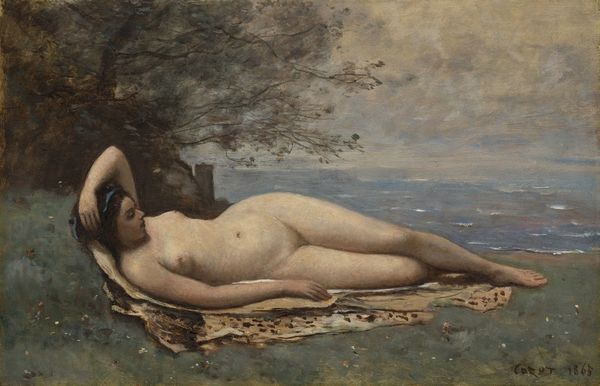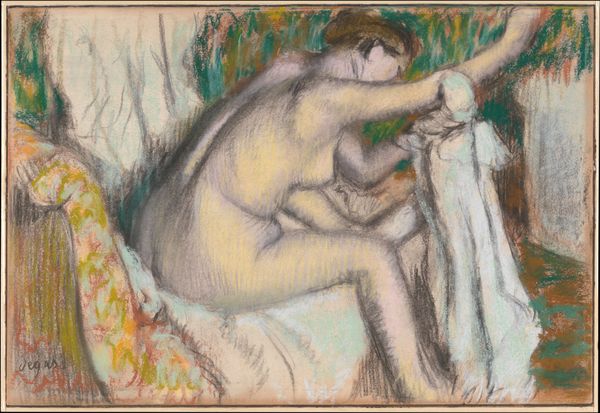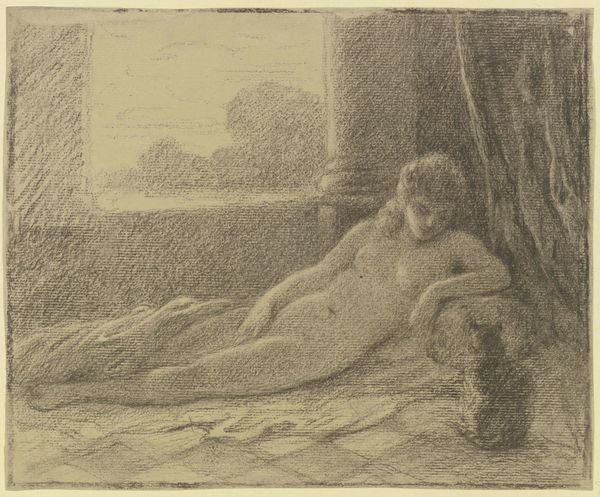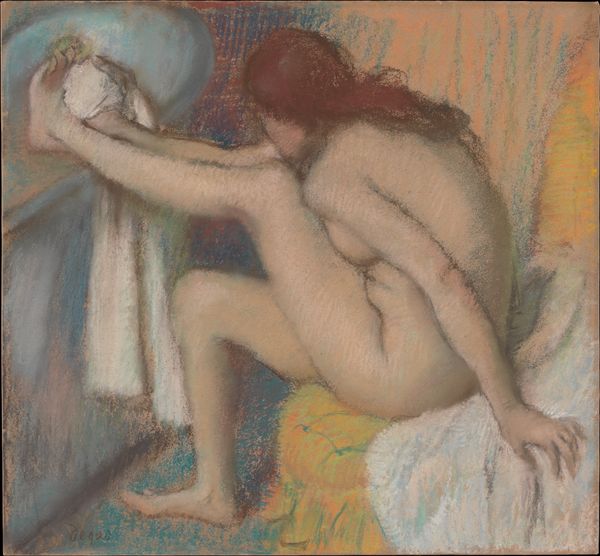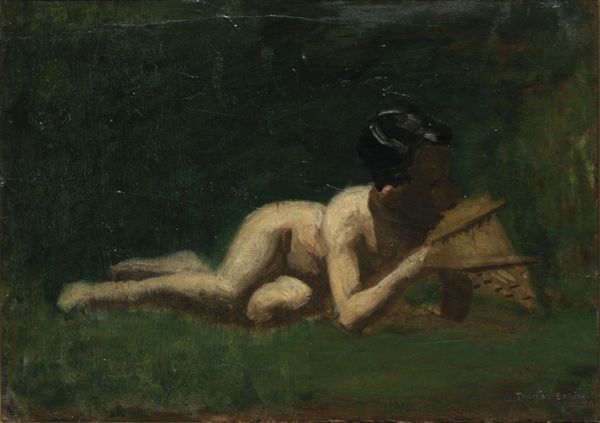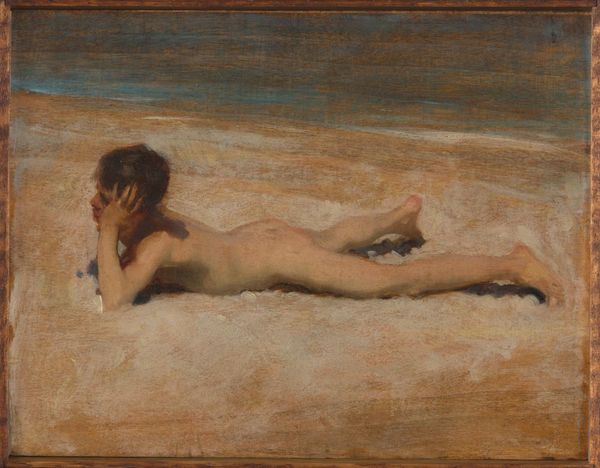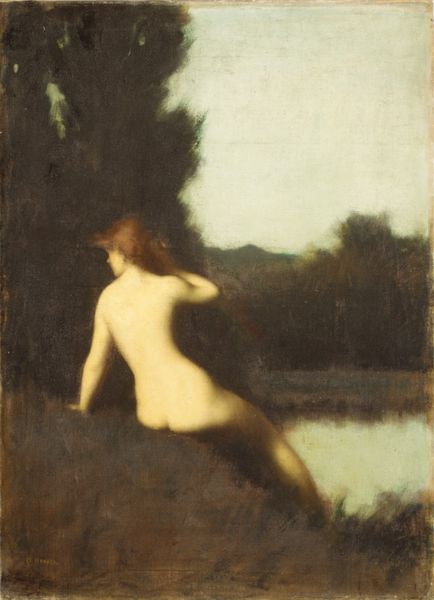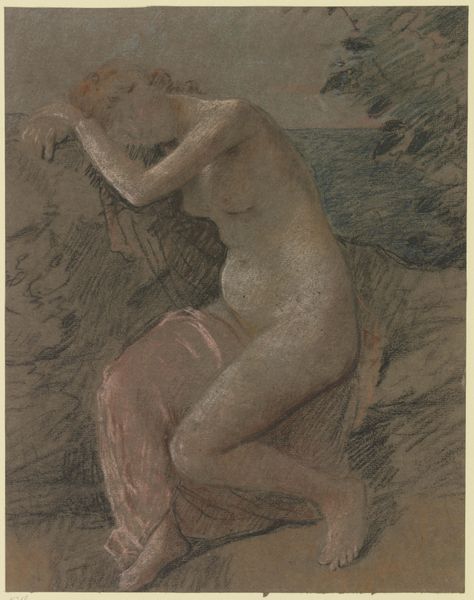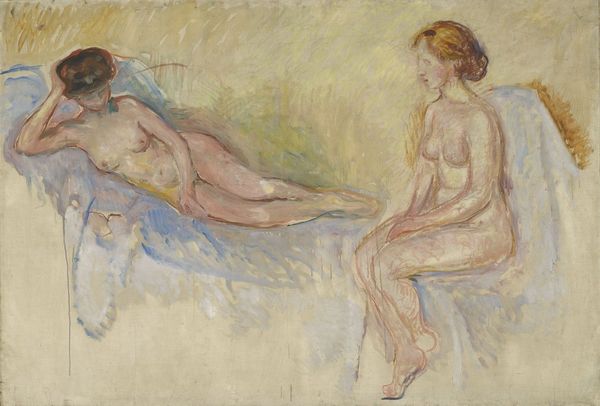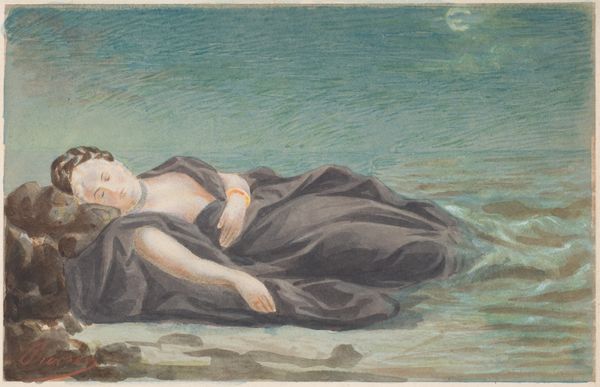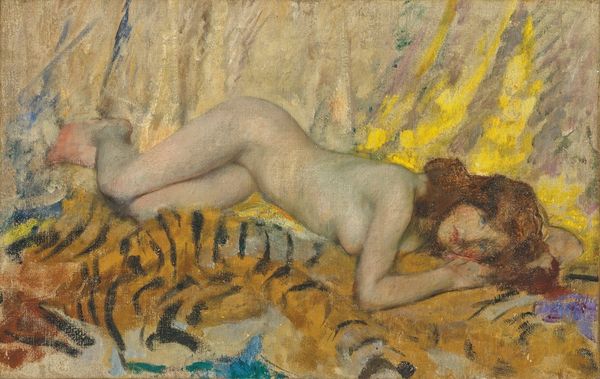
painting, plein-air, oil-paint
#
painting
#
plein-air
#
oil-paint
#
landscape
#
oil painting
#
female-nude
#
symbolism
#
nude
#
portrait art
#
watercolor
Dimensions: 10 x 15 1/2 in. (25.4 x 39.4 cm)
Copyright: Public Domain
Curator: What a subdued and affecting landscape. We're standing before "Tamaris," a painting rendered between 1886 and 1887 by Pierre Puvis de Chavannes. It's currently part of the Metropolitan Museum of Art's collection. Editor: The pallid color scheme immediately strikes me. The lack of stark contrast and muted tones evokes a profound sense of stillness, almost a melancholic quietude. It's as if the landscape itself is holding its breath. Curator: That tranquility is very characteristic of Puvis de Chavannes, who emerged as a central figure within the Symbolist movement. The nude female form, often interpreted as an allegory, blends with this subtle portrayal of nature, and becomes an important expression of idealized beauty at this period in French painting. Editor: There's a deliberate simplification in the rendering of form here too. Look at the deliberate flattening of the planes, especially within the trees and the reclining figure. It almost feels archaic, recalling fresco painting from the Italian Renaissance. This conscious reduction in detail directs our attention to the relationships of shape and color above all. Curator: And that stylized quality, bordering on primitivism, really underscores the thematic concerns of the Symbolists, turning away from industrialized modernity. Here, Puvis de Chavannes harkens back to a mythical, pre-industrial past, connecting idealized nudes, classicism and the French landscape tradition in a very deliberate artistic project that speaks to an artistic rejection of the rapid modernization of French culture at this time. Editor: Absolutely. And it’s essential to consider how the materiality contributes. The oil paint, so thinly applied, lends the whole surface a unique matte quality; like a fresco pulled from the wall. Curator: "Tamaris" became one of the artist’s entries into the Salon; the premier space for demonstrating cultural legitimacy at this time. So, we see how his engagement with the nude wasn’t a casual interest but rather a sophisticated navigation of how to achieve prominence as an artist. Editor: Reflecting upon how the formal organization allows for multiple readings is rewarding. Curator: I concur. It’s been a worthwhile experience connecting social and cultural ideas with these forms.
Comments
No comments
Be the first to comment and join the conversation on the ultimate creative platform.
